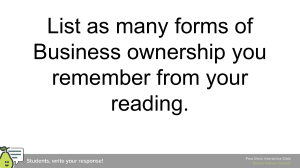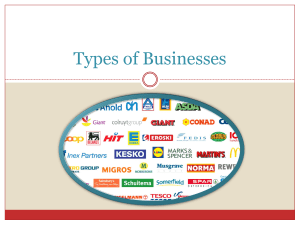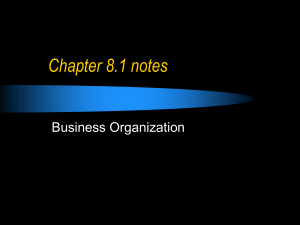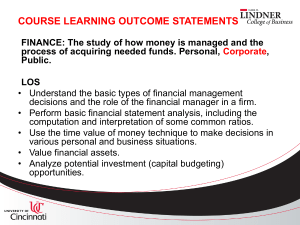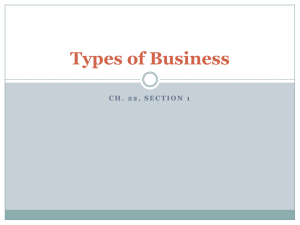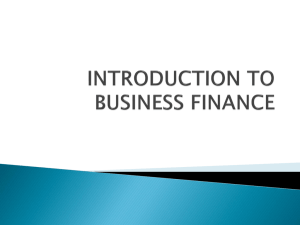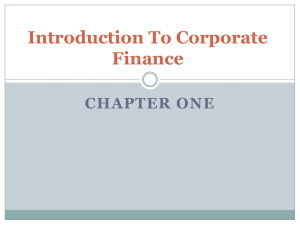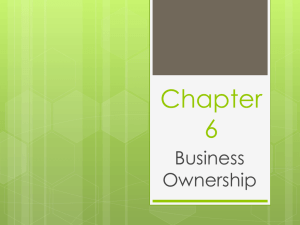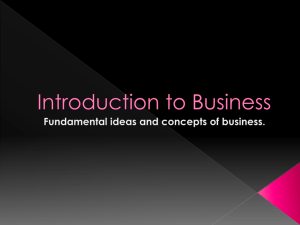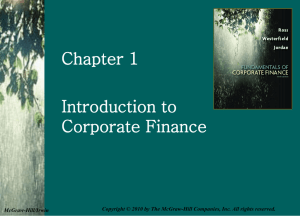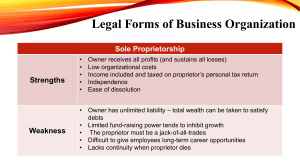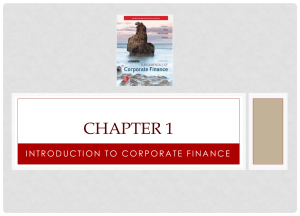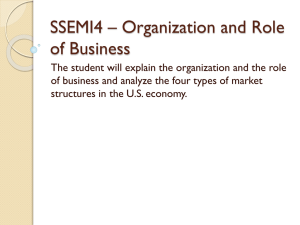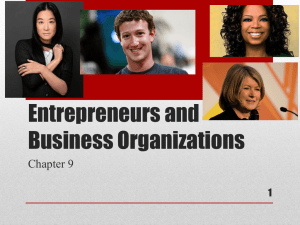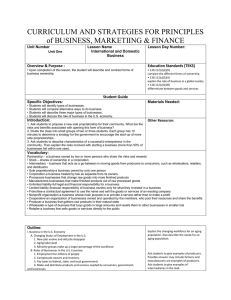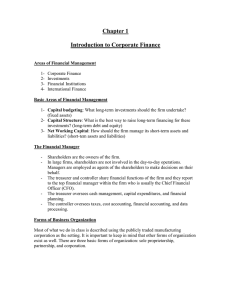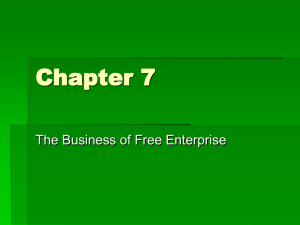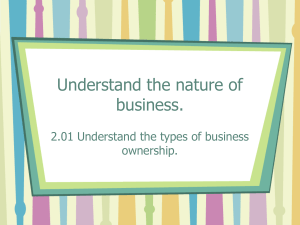Ch. 6 Notes
advertisement
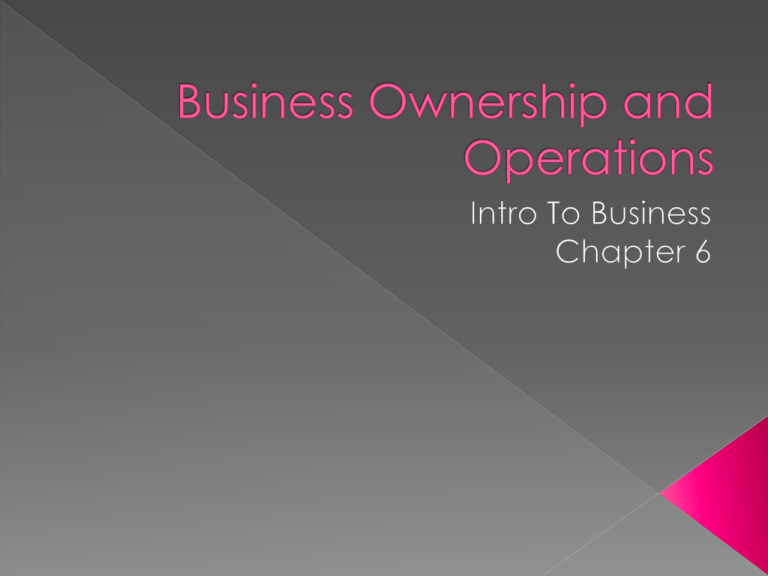
Section 6.1 – Types of Business Ownership › Describe the advantages and disadvantages of the three major forms of business organizations › Describe how cooperatives and nonprofits are like and unlike corporations and franchises Sole Proprietorship › A business owned by one person. Three- quarters of all businesses in the U. S. take this form of organization › Advantages: Easy to do (licenses/permits) In charge of their business Can make all of the decisions Can keep all of the profits Usually have lower taxes (taxed once) 6-1 › Disadvantages: Unlimited liability The owner is responsible for the company’s debt’s. If the owner has more debt than they receive, the owner has to make up the difference. Partnership › A business owned by two or more people who share its risks and rewards. › Advantages: Easy to start Easier to obtain capital Banks are often more willing to lend money Taxed only once Each partner brings specific skills and talents › Disadvantages All of the partners share the risk Problems with partners getting along Unlimited Liability Corporation › Company that is registered by a state and operates apart from its owners › To raise money, the owners can sell stock or shares of the company › Advantages Limited Liability Holds a firms owners responsible for no more than the capital that they have invested in it. Ability to raise money by selling stock Company does not end if an owner dies › Disadvantages Double taxes Extra governmental restrictions More difficult and costly to start Other ways to Organize a Business › Cooperative An organization that is owned and operated by its members When a group of businesses pool their resources Purpose – to save money on the purchase of certain goods and services Ex. Ocean Spray › Nonprofit Organization Type of organization that focuses on a providing a service, but not to make a profit. Must register with the government. Because they do not make a profit they do not pay taxes. Ex. Churches › Franchise A contractual agreement to use the name and sell the products or services of a company in a designated area Ex. McDonalds, Tim Horton’s You have to invest money and pay franchise fees or share the profits. 6-1 1. 2. 3. 4. What is the difference between a sole proprietorship and a partnership? If a partner makes a bad decision, what responsibility do the other partners have? Why are cooperatives formed? Compare limited liability and unlimited liability. 6-1 Section 6.2 – Types and Functions of Businesses › Differentiate the six types of businesses › Describe the five functions of business › Discuss how the five functions of business relate to each other Types of Business › Producers Business that gathers raw goods Agriculture, mining, fishing, and forestry › Processors Changes raw materials into more finished products Made from raw goods that require further processing Crude oil to gasoline, iron ore into steel › Manufacturers Makes finished products out of processed goods Cars, CD’s, Computers 6-2 Intermediaries and Wholesalers › Intermediary – A business that moves goods from one business to another Buys goods, stores them and resells them › Wholesaler – Distributes goods Retailers and Service Businesses › Retailer – Purchases goods from wholesaler and sells them to consumer › Record stores and auto dealers Functions of Business › Production and Procurement Production – Process of creating, expanding, manufacturing or improving goods and services Procurement – The buying and reselling of goods that have already been produced. › Marketing Process of planning, pricing, promoting, selling and distributing ideas, goods, and services Getting consumers to buy the product › Management The process of achieving company goals by planning, organizing, directing, controlling and evaluating the effective use of resources. › Finance and Accounting Finance – The business or art of money management Requires analyzing financial statements to make future decisions Accounting – Maintaining and checking records, handling bills and preparing financial reports for a business. What is the difference between a producer and a processor? Identify the five functions of business. Give an example of how the accounting and finance functions can affect a business’s marketing and production processes.
